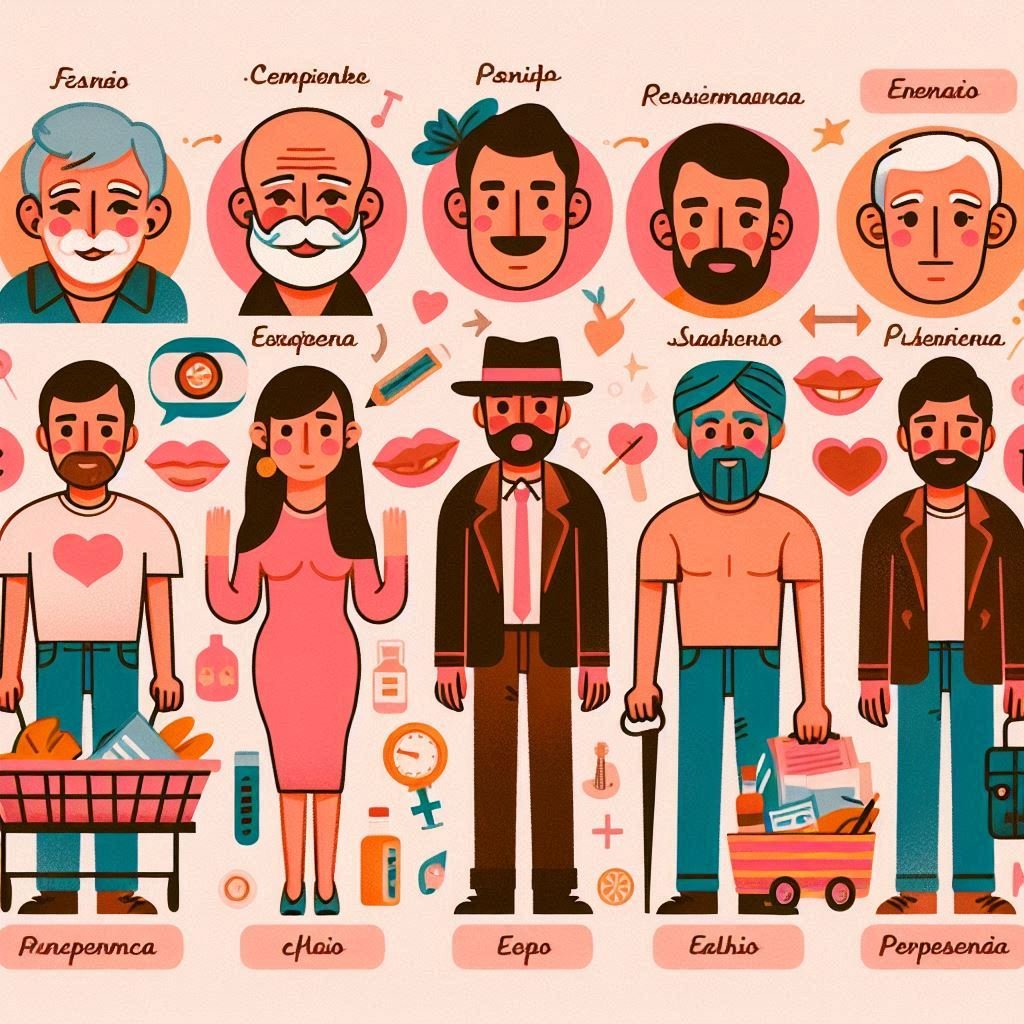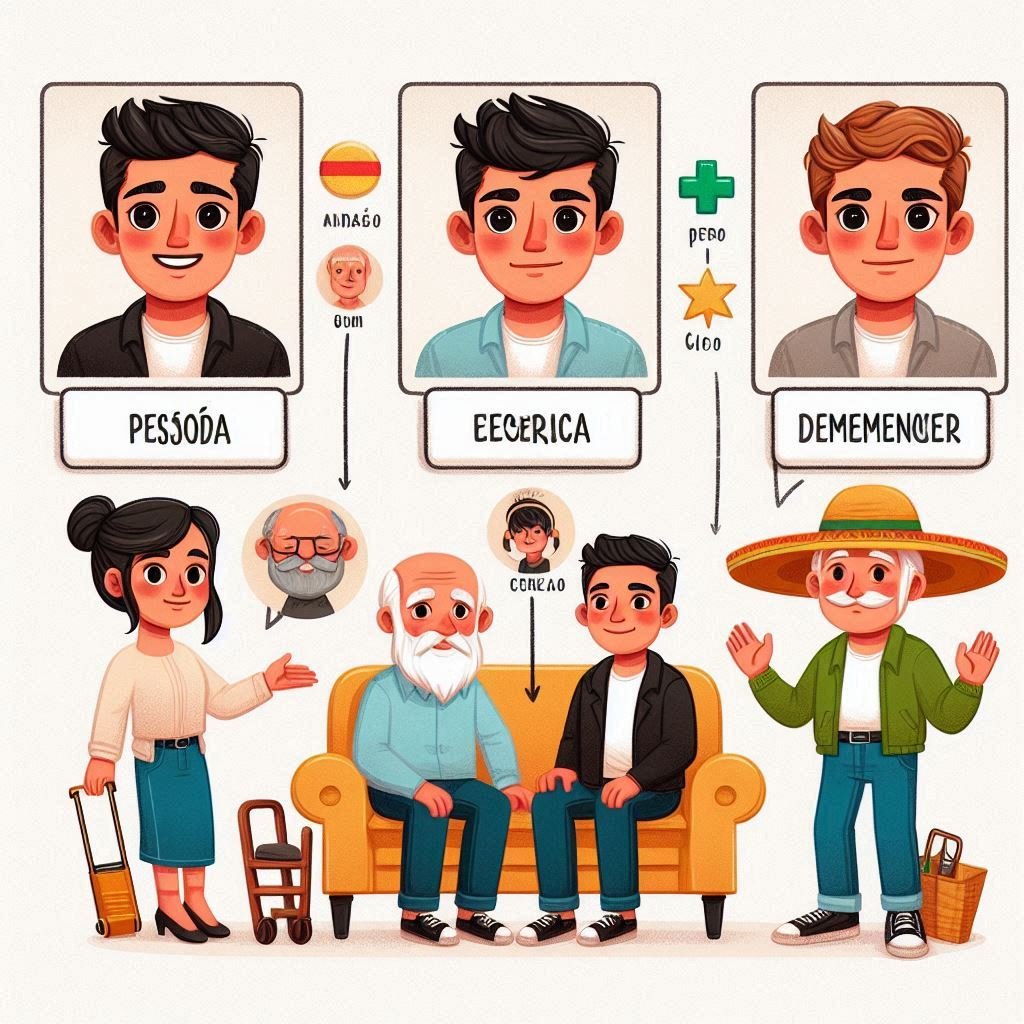Describing people (physical appearance and personality traits)
Training for the ability to describe a person about his or her physical appearance and character in Spanish can be very important in enhancing mastery of this beautiful language. Whether you do it in your day-to-day conversations or want to win an argument to the effect of ‘You should learn to describe people (physical appearance and personality traits) in Spanish’, practicing the language skill in question will help you get your point across more effectively and dynamically.

Describing people (physical appearance and personality traits)
When it comes to “learn Describing people (physical appearance and personality traits) in Spanish,” it is pivotal that learners know the progress of the knowledge that makes part of describing as a whole. Physical characteristic covers the physical attributes that encompass height, size, hair type or color, eye type or color, and face shape. Personality traits focus on aspects of character, which may include friendliness, humor, intelligence, and temperament, among other things,
Physical Appearance: describing people (physical appearance and personality traits)
To learn the Spanish lesson of “Describing people (physical appearance and personality traits),” you should know which adjectives and nouns are right for the occasion. For instance, to describe a person, when it comes to height, the following words are used: alto (tall), bajo (short), and o de estatura media (of average height). In the context of the building, adjectives such as Delgado (thin), Robusto (stocky), or atlético (athletic) can come in handy.
Personality Traits: describing people (physical appearance and personality traits)
To describe the personality traits of a person in Spanish is a bit different from everyday language use, and one has to learn some distinct terms. When practicing “Describing people (physical appearance and personality traits) in Spanish,” we may have words like “amable,” meaning friendly, “divertido,” meaning comedy, “inteligente, meaning intelligent, or “tranquilo,” meaning calm. You can also say, “I saw that this person has a good sense of humor, meaning it is possible to say that he/she has ‘tiene un gran sentido del humor;’ or it is possible to claim that he/she is sociable, for example, ‘es una persona muy sociable’.

Combining Descriptions: describing people (physical appearance and personality traits)
To give a more extensive description, you will be required to use both the physical attributes and behavioral characteristics of the person. For instance, “Juan is a tall and thin man of brown hair and green eyes, very kind and joyful, who loves to make jokes.” Juan is a tall and delgado man, of cabellos castaño and ojos verdes, a persona muy amable and alegre that le gusta reírse).
Practice and Immersion: describing people (physical appearance and personality traits)
The best suggestion to effectively learn to describe people (physical appearance and personality traits) in Spanish is, as stated earlier, practice coupled with the use of Spanish media. Speak to Spanish people: While this can be somewhat difficult, you must try and find native-speaking people to converse with about any topics in general Spanish. This can be movies, television shows that have Spanish subtitles, or any magazine or book articles. In this way, it is useful to be surrounded by the language, as the opportunity to expand a vocabulary will help to realize how ordinary people, professions, and genders are described in English.
Conclusions: describing people (physical appearance and personality traits)
Getting to know how to describe people in Spanish, either in terms of the physical appearance they possess or the personality traits that they portray, is a skill that will enhance our ability and extend our capacity to interact more deeply with Spanish speakers. As long as the target language is incorporated into your daily speech and you focus on memo-spacing the newly acquired vocabulary, you will eventually be able to produce rich descriptions of a person’s looks and personality traits. Where you previously may have struggled with speaking out loud and expressing yourself, you will now be able to do it with ease.

FAQs of describing people (physical appearance and personality traits)
How do you explain how a man or woman is formed or the formation of his or her body or frame in span_issues?
When talking about the build, you can say ‘Delgada’ (thin), ‘atlética‘ (athletic), ‘robusta’ (stocky), ‘mediana’ (medium), and the rest in the same manner.
As in any other language, there are numerous methods of defining the character of a person in the Spanish language?
Hence, the following are examples of adjectives for personality: friendly, nice, intelligent, funny, shy, outgoing, proud, humble, etc.
How could you fruitfully compile embodiment and personality attribute descriptions in Spanish?
Such as: “es una persona alta y delgada, con ojos azules y cabello rubio. “He/She is a tall, thin person with blue eyes and light hair who has a very friendly and nice personality.
As far as I am concerned, is there any kind of difference among the different Spanish cultures regarding the way they talk about people?
Each culture may consider some of the traits to be more important for the individual possessing the given set of features. For instance, some Latin American countries differ from others in that they use direct expressions and descriptions of weight with greater frequency. People from different cultures can coexist and provide invaluable support and different perspectives on life.
What are the activities that can be employed by a learner to be able to describe people in Spanish appropriately?
Experience the experience by watching shows or movies in Spanish, reading descriptions in books or magazines, and with the help of Spanish-speaking individuals. To gain the ability, you should try and describe each person you come across in your day-to-day life.
